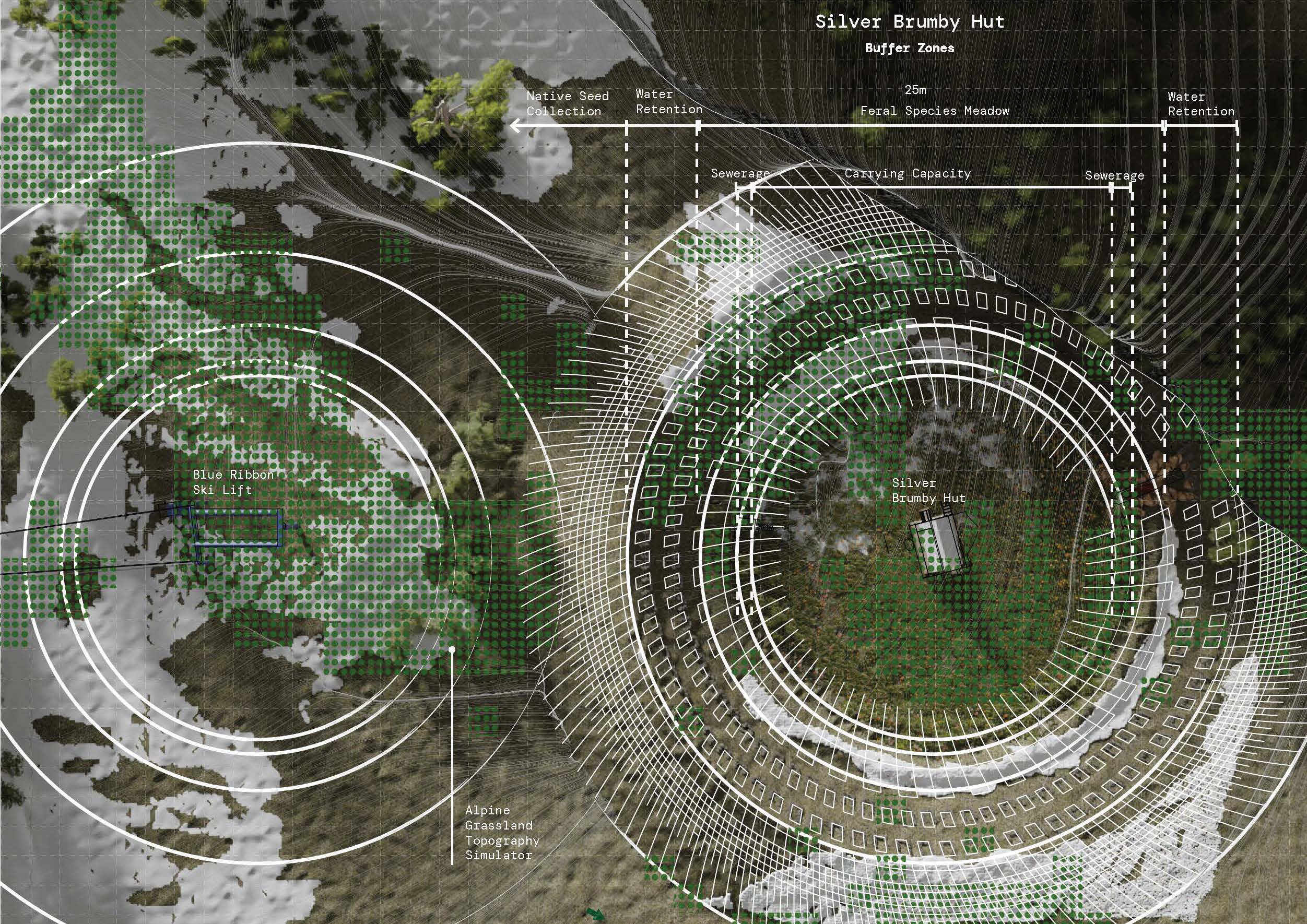
Feral Futures: Tools and Tactics to Regenerate Alpine Sky-Islands
Landscape Architecture Design Research Project B
RMIT University
Feral Futures explores how data-driven design can support climate resilience in Australia’s alpine bioregion. As the snowline retreats and alpine grasslands become fragmented into “sky islands,” the region faces mounting tensions between ecological preservation, trail tourism, and the collapse of snow-dependent resort economies. Traversing this terrain, the Falls to Hotham Alpine Crossing presents a unique opportunity to reimagine infrastructure, regenerate alpine ecosystems, and reframe the region’s future.
The project tests tools such as real-time environmental sensors and erosion-deposition simulators to inform trail redesign and ecological restoration. Hiking routes are shifted and extended to connect alpine resorts, while ski lifts, heritage huts, and trailheads are reimagined as active nodes in grassland regeneration. Modified topographies create microclimates suited to native alpine species, while sloped seed-catching boardwalks control invasive spread and promote resilience. Scientific monitoring of carbon dioxide, soil moisture, and temperature is embedded within the trail infrastructure to track ecological shifts over time, allowing for adaptive management.
Feral Futures demonstrates how landscape architecture can integrate environmental data and site-responsive design to address complex climate challenges. It proposes a replicable model for regenerating vulnerable ecosystems while supporting new economies in post-snow alpine regions.
